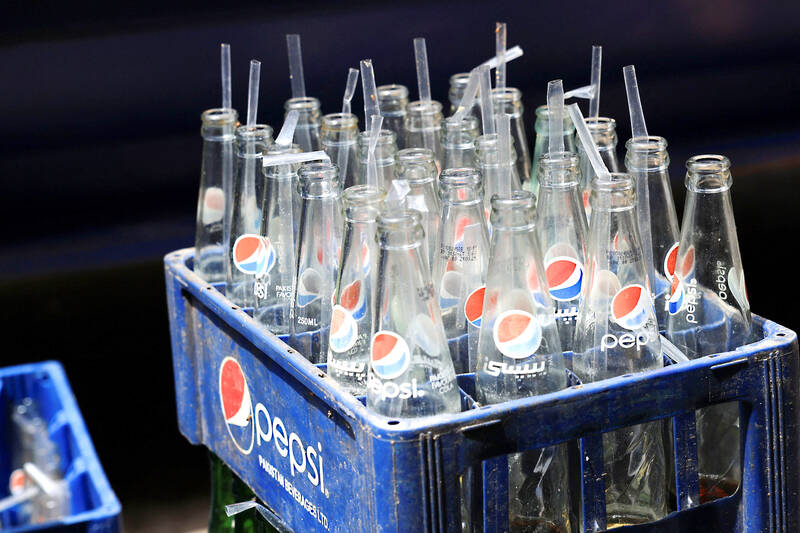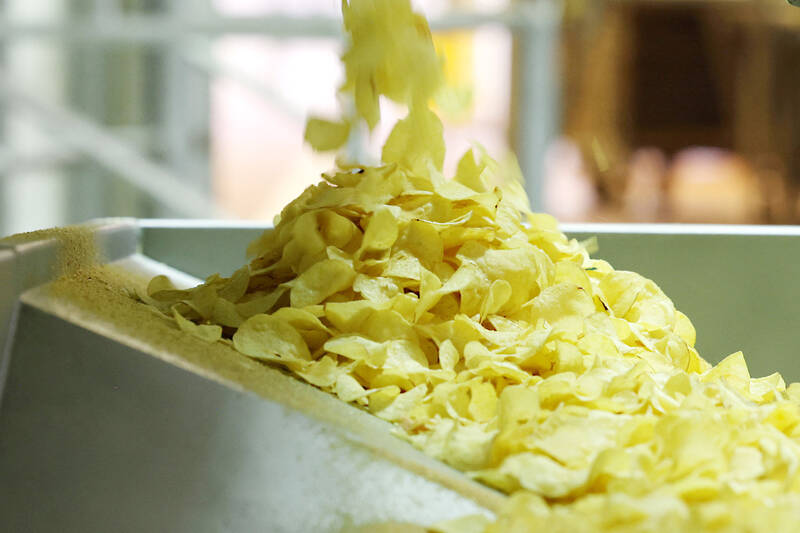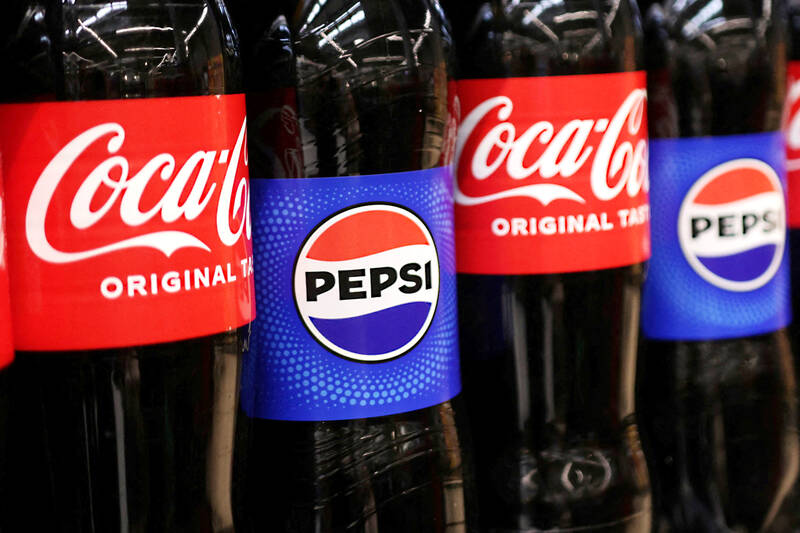I drink a lot of Pepsi Max. A slab of 30 cans has been known to disappear within a week. That’s upward of four 375ml cans a day of sugar-free cola. Not enough to end up on My Strange Addiction but enough to concern friends.
“Those things will kill you,” they tell me.
To be clear, there’s no evidence that Pepsi Max will kill anybody. Breathe easy, PepsiCo.

Photo: Reuters
But in 2023 artificially sweetened products like Pepsi Max were briefly the subject of panicked headlines after the WHO classified aspartame — the artificial sweetener in every bottle and can — as a possible cancer-causing agent, in the same category as gasoline exhaust and lead.
That freaked some people out but the truth is we don’t really have good evidence about the effect of aspartame on the body. Studies have not been able to find strong, consistent links between the sweetener and cancer. Four cans a day is probably fine but it’s worth re-evaluating my strange compulsion for Pepsi Max, all the same.
So now I have 66 days to get off the stuff. That number is pulled from a 2009 study on habit formation led by Phillippa Lally, out of University College London. Sixty-six days is often quoted as the average time it takes to form a new habit — but that’s not the message Lally hoped to get across in the paper.

Photo: Reuters
“How long does it take to form a habit? It’s highly variable,” she says. “We don’t really know yet.”
My experiment is about habit disruption. I’m not forming a new one. I’m trying to break an old one. So on Sept. 24 I empty the fridge of Pepsi Max. The next day my abstinence odyssey begins.
Quick ground rules: I’m not going to drink any sugar-free soda that contains artificial sweeteners. That seems like a reasonable way to do this. If I simply replaced Pepsi Max with Coke Zero, would I be achieving anything? No.

Photo: Reuters
Water is so boring and this isn’t the 66 days drinking water challenge. I want to line my gastrointestinal tract with something fun. Something with a little bit of oomph. I decide a full-blooded, sugar-loaded soft drink, as well as beer and wine, will be OK. I rarely drink that stuff anyway, unless I’ve found myself in a McDonald’s at 2am.
WEEK ONE
I love cracking open a can of Pepsi Max after exercise. I’m not sure if this makes sense, physiologically, but there’s a soul-deep thirst-quenching in that can — I’ve trained my brain to believe it’s better than water.

Photo: Reuters
I notice the absence of this the first day of the experiment, after jogging. By day three, I’m craving a can.
Instead, my editor tortures me and asks me to do a photoshoot, sending a photographer to my apartment and getting me to hold, caress and lie with dozens of Pepsi Max cans, as though they’re the love of my life. As though they’re as important to me as Darren Jarman’s five goals in the final quarter of the 1997 AFL grand final. That’ll do. That will do.
At one point we take a photo where an old, empty can is pressed to my lips. Though it has been washed out, I can smell the … whatever gives Pepsi Max its smell. I wince.
WEEK TWO
I’m reminded of the Werner Herzog quote when he is standing in the middle of a jungle and begins to sermonize.
“Nature here is vile and base,” he says. “Of course, there’s a lot of misery.”
That’s what moving through the world without Pepsi Max for the first week felt like.
Week two is about strategizing and adaptation. The biggest change I make is to make sure I’m constantly filling up my water bottle and leaving it in front of me, at my desk. I also start squirting in some lemon juice every now and again. This is what habit researchers like Lally might describe as “substitution.” It helps — but not much.
WEEK THREE
I’m at the 29th biggest mall in the world. It used to have dolphins and flamingos. It looks like a pretty regular mall to me, which means there are, obviously, lots of opportunities to buy a Pepsi No Sugar. I opt for sugary tea with my Dairy Queen order.
The week ends with a drive through the Canadian Rockies. Road trips are typically the best time for two things: investigative podcast series and sugar-free soda, mostly post-mix from whatever fast food restaurant is on the side of the freeway. I indulge in only one of those things (the podcast, I swear!).
I stay in a mountain lodge just outside Jasper, a town cruelled by wildfires, and stop in for a “beaver tail,” a deep-fried flat dough covered in cinnamon and sugar. I think “this would go well with Pepsi Max” and also “this is the most horrible food imaginable, who would eat this?”
WEEK FOUR
I notice I’ve been filling up on coffee in the mornings, sitting in cute cafes and reading or tapping away on my laptop. If I make it to 2pm, it’s acceptable to start drinking booze. Things start getting easier here, almost 30 days in, but I also realize I’m substituting an afternoon Pepsi Max with something probably less healthy.
And I’ve learned that the consumption of Pepsi Max is driven by boredom. I’m constantly at my desk at home and it’s nice to stop and have a few sips out of a can when I can’t think of the right word or phrase to type. Pepsi Max is procrastination.
WEEKS FIVE AND SIX
In the interest of brevity: five and six feel like the easiest yet because I discover two things.
1. Canned sparkling water tickles the same part of my lizard brain that Pepsi Max does. Something about this makes sense but I feel as though I’ve come to the realization too late. This is another substitution but it doesn’t feel like an unhealthy one.
2. I spend some of this time in Texas and they’re mad about barbecue. It feels disrespectful to drink Pepsi Max with barbecue … but a Lone Star or local craft beer? Hello!
WEEK SEVEN
If this is therapy, week seven provides a breakthrough. After speaking to Evangeline Mantzioris, a nutritionist and food scientist at the University of South Australia, my view on Pepsi Max shifts.
And as I’m metaphorically lying on Mantzioris’s food-therapy couch, there’s a recognition that taste is just one element of my Pepsi Max experience. What I have is an inherited affliction. It must have come via Dad, who’d I consider the Michael Jordan of Pepsi Max consumption. And Pepsi Max, as connection, as memory, as nostalgia, must have burrowed into my subconscious somewhere along the way, too.
Pepsi Max, to me, is many things. A reward after exercise. A salve when it’s hot. A way of staving off boredom. It’s about the sound of a can cracking open. These things I connect to. This is what tickles the lizard brain.
FINAL WEEKS
My final two weeks are upended by travel, which does provide a chance to sit in nice cafes once again and tap away at the laptop.
It’s when I’m standing in a Christmas market in the middle of Budapest that I have another breakthrough, of sorts: There’s just a lot of advertising about Pepsi. It’s everywhere. Same with Coke. They’re entrenched in our daily lives. And that’s kind of bizarre, when you think about it for too long.
At the end of this odyssey, I call Lally, the author of the 2009 study on habit formation. Her habit research, and the research of others we discuss, help put everything in perspective.
Habit disruption is different to habit formation, and I can’t make any sweeping conclusions about Lally’s often-cited study. But what does appear true is that both are highly individualized. Everybody is different and our ability to make or break habits is variable.
After a jog on Dec. 1, I take my first sip of Pepsi Max in 66 days. Just the one can, though. And I think “That’ll do. That will do.”

Feb. 17 to Feb. 23 “Japanese city is bombed,” screamed the banner in bold capital letters spanning the front page of the US daily New Castle News on Feb. 24, 1938. This was big news across the globe, as Japan had not been bombarded since Western forces attacked Shimonoseki in 1864. “Numerous Japanese citizens were killed and injured today when eight Chinese planes bombed Taihoku, capital of Formosa, and other nearby cities in the first Chinese air raid anywhere in the Japanese empire,” the subhead clarified. The target was the Matsuyama Airfield (today’s Songshan Airport in Taipei), which

For decades, Taiwan Railway trains were built and serviced at the Taipei Railway Workshop, originally built on a flat piece of land far from the city center. As the city grew up around it, however, space became limited, flooding became more commonplace and the noise and air pollution from the workshop started to affect more and more people. Between 2011 and 2013, the workshop was moved to Taoyuan and the Taipei location was retired. Work on preserving this cultural asset began immediately and we now have a unique opportunity to see the birth of a museum. The Preparatory Office of National

China has begun recruiting for a planetary defense force after risk assessments determined that an asteroid could conceivably hit Earth in 2032. Job ads posted online by China’s State Administration of Science, Technology and Industry for National Defence (SASTIND) this week, sought young loyal graduates focused on aerospace engineering, international cooperation and asteroid detection. The recruitment drive comes amid increasing focus on an asteroid with a low — but growing — likelihood of hitting earth in seven years. The 2024 YR4 asteroid is at the top of the European and US space agencies’ risk lists, and last week analysts increased their probability

On Jan. 17, Beijing announced that it would allow residents of Shanghai and Fujian Province to visit Taiwan. The two sides are still working out the details. President William Lai (賴清德) has been promoting cross-strait tourism, perhaps to soften the People’s Republic of China’s (PRC) attitudes, perhaps as a sop to international and local opinion leaders. Likely the latter, since many observers understand that the twin drivers of cross-strait tourism — the belief that Chinese tourists will bring money into Taiwan, and the belief that tourism will create better relations — are both false. CHINESE TOURISM PIPE DREAM Back in July